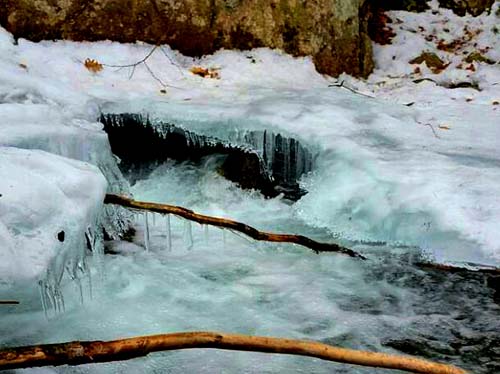Spring Melt Icicles
 |
The melting and freezing of water is a change in the state of water molecules, which is a physical process. In a solid form, weak bonds hold the water molecules together. As the temperature increases, these weak bonds break and the water molecules are freer to move and change to a liquid state.
Icicles are more likely to form on days where the sun is shining despite the freezing temperature, and on areas that are exposed to sunlight. Surfaces that are in the direct path of sunlight are likely to be where icicles form as the sun will melt the snow and ice and cause the resulting water to drip down the nearest edge.
Water that trickles down is capable of refreezing in the air, so that a column of ice will form and an icicle is born. Further, the position of the icicle will usually fall out of the path of the direct sunlight which will leave it susceptible to the cold air and allow it to refreeze.
Mohammed Kurkcu
Nile Academy, Toronto, ON
Third Prize ( 2015 High School Individual Category )
Questions or comments regarding these pages may be sent to
cap@uottawa.ca